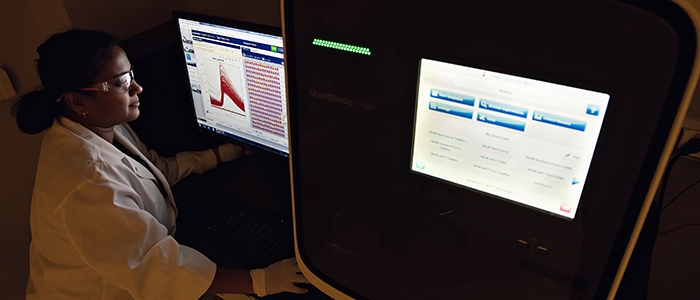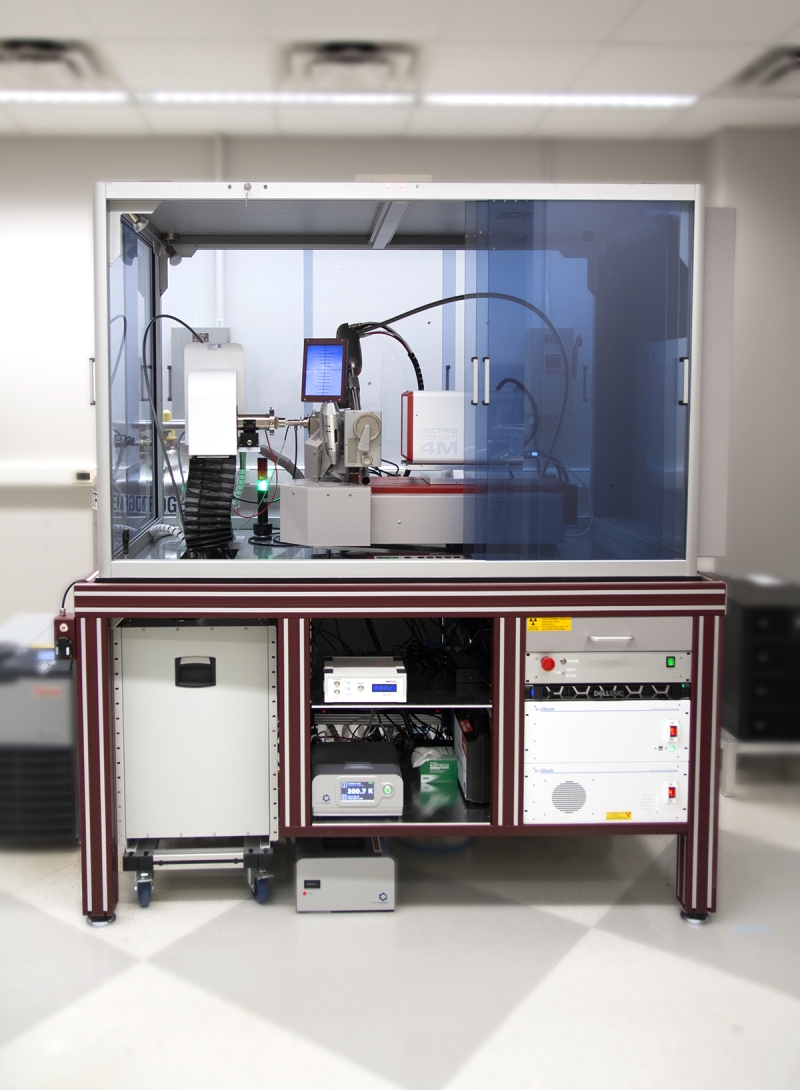On-Site Facility
Our X-ray crystallography facility includes an Excillum MetalJet-D2+ 70kV, 250W X-ray source equipped with high flux optics and Eiger2 R 4M hybrid photon counting detector. This system is the cornerstone for a regional X-ray facility to service crystallographers at U-M and surrounding area, especially during the dark period at APS which will start the Spring of 2023 and run to the Spring of 2024. (APS will undergo extensive upgrades during this time period).
LS-CAT Synchrotron Beamlines
In addition to the on-site facilities, U-M is a member of LS-CAT, a consortium of academic and research institutions that operates a multi-beamline facility located at Sector 21 of Argonne National Laboratory's Advanced Photon Source.
This facility consists of four experimental stations for X-ray crystallography with insertion device sources. Each station is equipped with state-of-the-art diffractometers, robotic sample changers, and large-area CCD detectors.
- The primary station, 21-ID-D, is fully MAD capable and is tunable from 5–20 keV. (Equipped with an Eiger 9M detector.)
- The 21-ID-F and 21-ID-G stations are at fixed energy (12.67 keV) and are suitable for selenium SAD experiments.
- The fourth station, 21-ID-E, is planned to be tunable for selenium and bromine MAD.
Beam diameters of 5 to 50 microns are available. Additionally, mail-in and remote access services are available.




